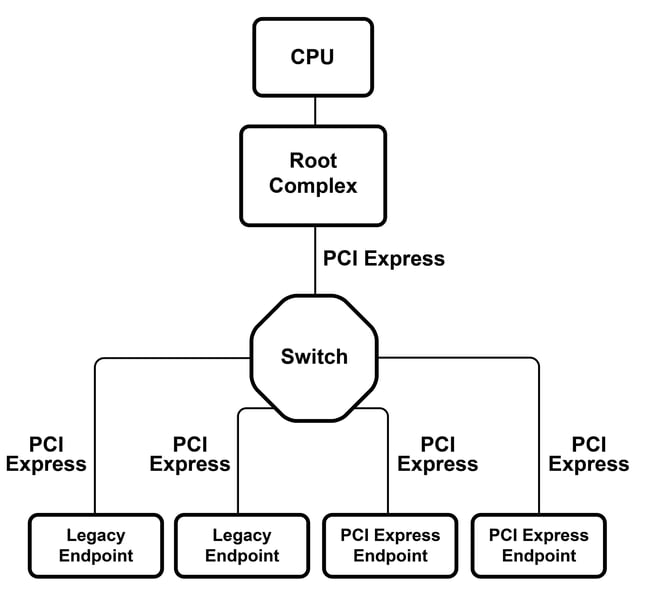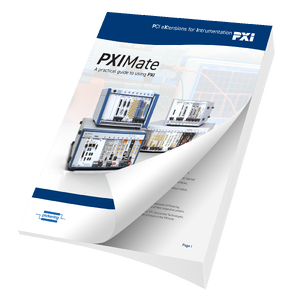What is PXIe?
PXI is a modular instrument system designed to take advantage of the fast data interfaces based on PCI and PCIe bus systems. The PXI standard defines the mechanical, electrical and software interfaces provided by PXI compliant products, ensuring that integration and software costs are minimized and allowing trouble-free multi-vendor solutions to be implemented.
PXI is an open standard that any PXISA member can use in creating a product, and the standard is designed to ensure that modules from different vendors will operate in any vendor’s chassis.
In 2005 the standard expanded to cover two physical implementations of the PCI bus, namely PCI (later often referenced as Classic PCI) and PCIe. These two versions of the bus are primarily software compatible but are not mechanically or electrically compatible. In use, a PXI system appears as an extension to the PCI or PCIe slots in the user’s controller regardless of whether the controller is embedded in the PXI Chassis or is a separate computer.
The two versions are referenced as PXI and PXIe, where PXI uses the multi-drop parallel bus structure of PCI, and PXIe uses the point-to-point serial interface of PCIe. Chassis can be designed that support both control methods in the same physical slot to provide support for either style of module. A commonly used abbreviation PXI(e) is often used to indicate that a statement applies to PXI and PXIe.
PXI Express
As the demand on PC speed grew, the slower speed of the PCI bus increasingly became an issue. A breakthrough was made by introducing a fast serial interface, PCIe, which carries data on wire pairs usually referred to as PCIe lanes. A single lane is no faster than a PCI 64-bit 33MHz interface; however, lanes could be aggregated into higher data rate connections, four lanes being a popular early configuration. The serial connection is also point-to-point, so a particular connection only carries traffic destined for the node connected at the end of it (and in any connections downstream of that device) and has no un-terminated transmission line stubs to distort the high-speed waveforms. That allowed the speed of each lane to be increased as technology improved. This serial interface system is inherently more scalable than a parallel bus system.
The structure is tree-style (see the figure below). A single PCIe connection expands into multiple connections below it, which in turn can branch into further connections. For connections at the trunk of the tree (Root Complex), there is a need for high BW to maximize the data capacity since it has to support all the endpoints on the downstream side. As with PCI, all traffic flows to and from the Root Complex, actual speed depends on the PCIe interface and the controller's ability to handle all the data and drivers. PCIe was added to the PXI standards as PXIe. As with PXI and PCI, there were extensions required to add test measurement features such as triggering in creating a PXIe standard.
 PCI Express architecture
PCI Express architecture
PXIe Modules
As with PXI, PXIe modules in principle can be provided in 3U and 6U form factors and may be arranged to support dual 3U stacked modules. 3U modules have one ejector handle, whereas 6U modules have two ejector handles. PXIe 3U modules connect to the backplane thru the XJ3 connector to provide PCIe and timing control, and XJ4 to provide the PXIe instrumentation functions (triggers and clock) and power. On 6U modules an additional optional connector, XJ8, can provide additional power to the module. As with PXI it is good practice to ensure that all PXIe modules are secured with fixings, top and bottom firmly secured and the ejector handle locked.
Industry adoption
Most PXI vendors supply both PXI & PXIe modules, with PXI being the most populous in the test market. If no PXIe modules are required in a specific Automated Test System, then a PXI chassis offers the most cost-effective solution. If both PXI and PXIe modules are required, then a PXIe Hybrid chassis is the most flexible solution. Both variants will continue to be supported by PXI vendors in the future.
Learn more about PXIe by downloading our free PXImate ebook.

